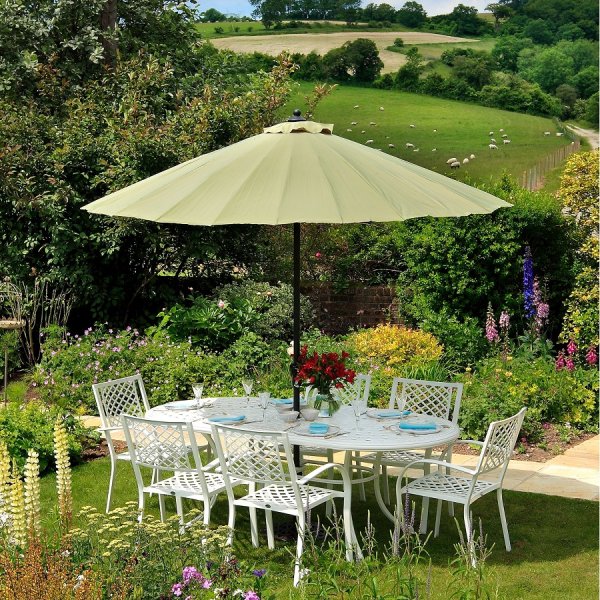A garden parasol, often referred to as a patio umbrella, is an essential accessory for anyone who enjoys spending time outdoors. Designed to provide shade and shelter, a garden parasol can transform any outdoor space into a comfortable and relaxing retreat. These versatile structures come in a wide range of styles, sizes, and materials, offering both functional and aesthetic benefits for gardens, terraces, patios, and balconies. Whether used for a casual family gathering or a more elegant garden party, a garden parasol can enhance the experience by protecting users from the sun’s harmful rays while adding a touch of elegance to the setting.

The primary function of a garden parasol is to provide shade. During hot summer days, the sun can make outdoor spaces unbearable, but a well-placed parasol can create a cool and pleasant environment. This is particularly important for individuals who want to enjoy the outdoors without exposing themselves to excessive sunlight, which can cause discomfort or even health risks, such as sunburn or heatstroke. Garden parasols are typically designed with a wide, canopy-like structure that can block out a significant amount of sunlight, allowing people to stay outside for longer periods without the need for constant reapplication of sunscreen.
Apart from their practical benefits, garden parasols Garden parasol are also popular for their aesthetic appeal. These outdoor accessories come in a variety of designs, ranging from simple and understated to bold and decorative. Many are available in different colors, patterns, and materials, enabling individuals to select a parasol that complements their garden’s décor or overall outdoor theme. The frame of the parasol is usually made from durable materials like aluminum, steel, or wood, which provide stability and longevity. The canopy fabric is often crafted from UV-resistant materials such as polyester or acrylic, ensuring that the parasol remains effective in blocking the sun’s rays and retains its color even after prolonged exposure to sunlight.
Setting up a garden parasol is generally straightforward. Most parasols are equipped with a sturdy base, which may be weighted or anchored in some way to prevent tipping over in the wind. There are also various mechanisms available for adjusting the parasol’s position, including tilting mechanisms that allow users to change the angle of the canopy as the sun moves across the sky. Some models feature a rotating or swiveling function, providing further flexibility for optimal sun coverage. Larger garden parasols, such as those used in commercial settings like cafés or restaurants, may require additional reinforcement to withstand wind or other weather conditions.
Another advantage of garden parasols is their mobility. Many models are portable and lightweight, making it easy to move them around the garden or take them to different outdoor locations. This flexibility allows users to adapt to changing weather patterns or adjust the shade coverage as needed throughout the day. On the other hand, larger, fixed parasols may be more suited for permanent installations in gardens or patios where a more consistent, long-term shade solution is desired.
In conclusion, a garden parasol is a practical and stylish outdoor accessory that offers significant benefits in terms of comfort, protection, and aesthetic appeal. It not only enhances the usability of outdoor spaces by providing shade, but it also contributes to the overall ambiance of a garden or patio. Whether for casual relaxation or hosting gatherings, a garden parasol is a valuable investment that can help create a more enjoyable and inviting outdoor environment.